site search
online catalog
SCARCE 5-POUND KETCHUM GRENADE
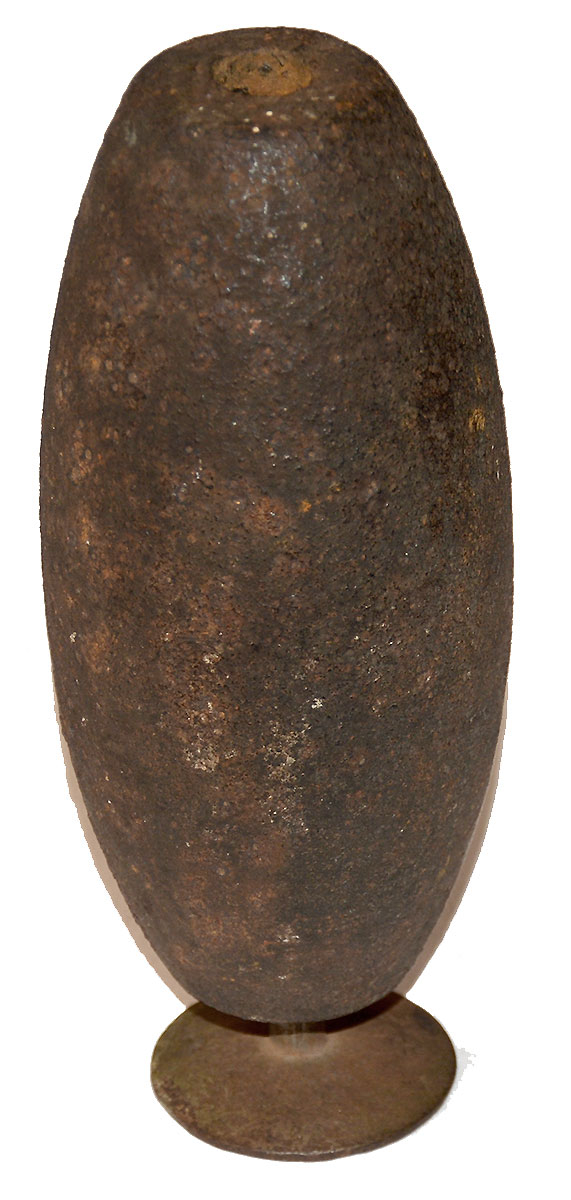
Hover to zoom

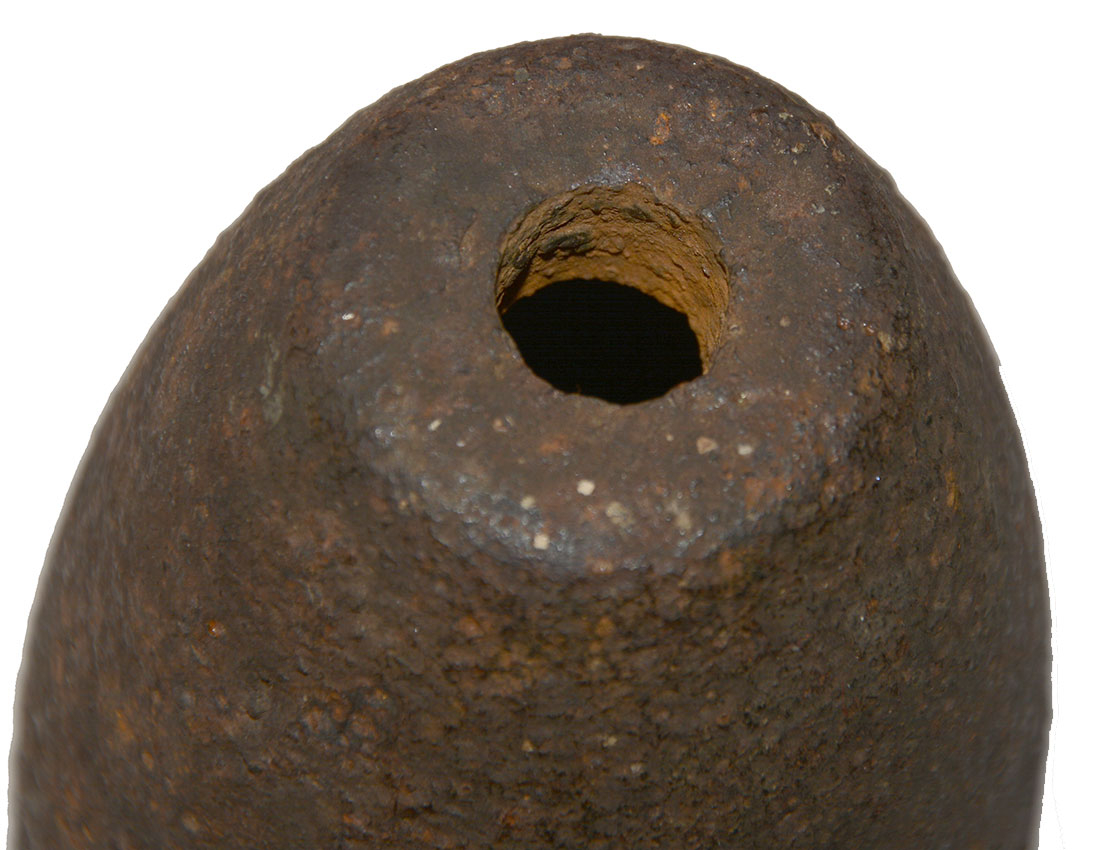
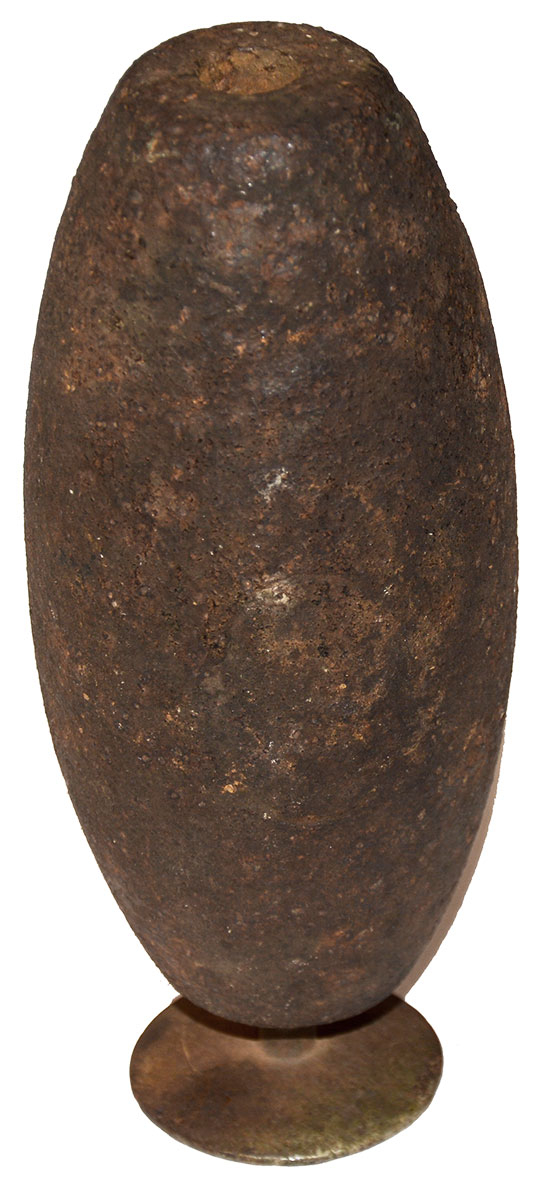
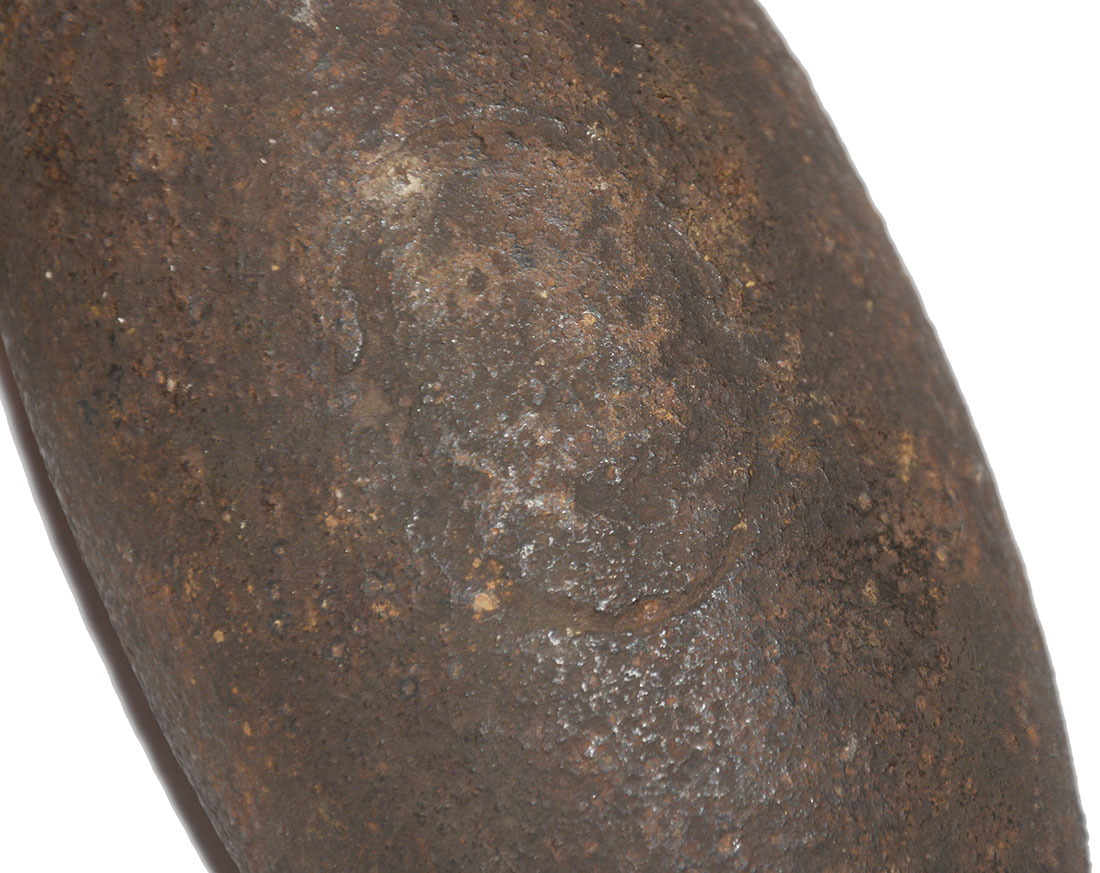
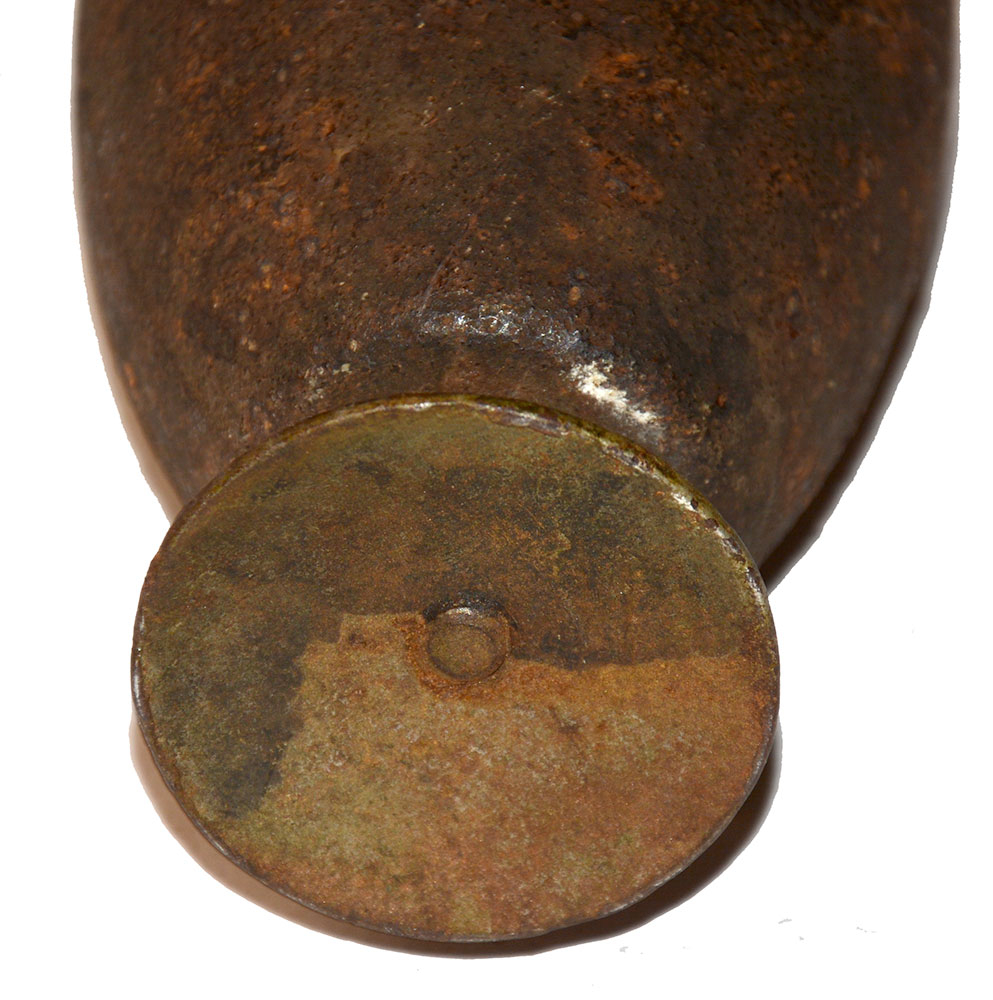
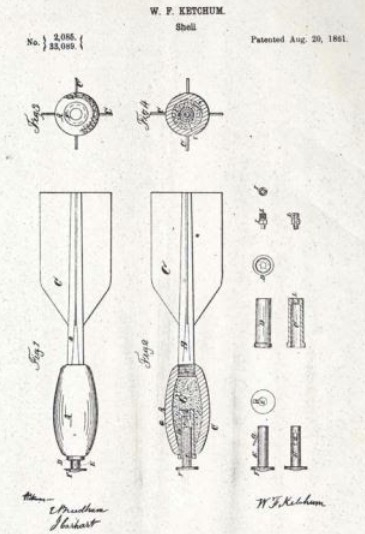

$1,495.00 SOLD
Quantity Available: None
Item Code: 2025-1818
Patented by William F. Ketchum of Buffalo, NY, these grenades looked a bit like over-sized darts when assembled. The hollow iron body is “prolate spheroid” in shape, a narrow football shape, with flat ends. That forming the nose has a recess with an internal nipple on which a percussion cap was set using a hollow rod. The body was then filled with powder from the other end, which was then plugged with a wood tail-piece having cardboard fins to stabilize it in flight.
Just before throwing it the user wood fit a plunger in the nose consisting of a large disk on the end of an iron rod that would strike and set off the percussion cap and main charge when it hit the ground. They were intended to be used in the attack and defense of fortification and in boarding actions on ships. They are mainly found in 1, 3 and 5-pound sizes made by Carhart and Needham of New York.
This is one of the 5-pound examples, the iron body measuring 6-1/2” long. This has an even brown color with just shallow pitting and slightly crusty surface. This comes with a reproduction plunger so that it can be displayed upright.
The best known example of Ketchums being used in combat is at the siege of Port Hudson, where both three and five-pound examples like this have been excavated and the museum there has part of one-pound example. The 91st NY were assigned to act as grenadiers in an attack, and it did not go well. The grenade has to squarely strike a firm surface to detonate. Confederates quickly figured out that by spreading out blankets behind their fortifications they could soften the grenade’s landing and prevent their detonation. They even, by some accounts, caught some in blankets. In any case, they also reportedly had better luck in getting them to go off when thrown back at their assailants. In addition to examples from Port Hudson, others have reportedly been recovered at Vicksburg and Petersburg, and several were recovered from the wreck of the U.S.S. Cairo.
This is a scarce piece of Civil War ordnance. They occasionally show up plated for display by early surplus dealers. This one has not been touched. We show part of the patent papers and an advertising sheet. [sr] [ph:L]
~~~~~~~~~~~~~~~~~~~~~~~~~~~~~~~~~~~
THIS ITEM, AS WITH ALL OTHER ITEMS AVAILABLE ON OUR WEB SITE,
MAY BE PURCHASED THROUGH OUR LAYAWAY PROGRAM.
CLICK HERE FOR OUR POLICIES AND TERMS.
THANK YOU!
Inquire About SCARCE 5-POUND KETCHUM GRENADE
Most Popular
Historical Firearms Stolen From The National Civil War Museum In Harrisburg, Pa »
Theft From Gravesite Of Gen. John Reynolds »
Selection Of Unframed Prints By Don Troiani »
Fine Condition Brass Infantry Bugle Insignia »
featured item
RARE COLLECTION OF NINE ALBUMEN PHOTOS OF FORT MORGAN IN 1864
Offered here is a wonderful lot of nine mounted photographs recorded around Fort Morgan following the Battle of Mobile Bay. All the photographs are pasted to plain card-stock mounts, each measuring 9.5” x 7.75”. Each mount features printed… (2025-1889). Learn More »


